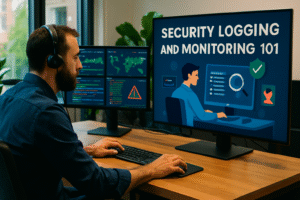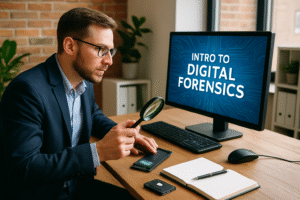
What is two-factor authentication
In the ever-evolving landscape of digital security, protecting personal and professional data has become both a challenge and a necessity. Cyber threats are as persistent as they are inventive, targeting individuals and organizations alike. As we increasingly inhabit digital spaces—whether building careers in tech, advocating for diversity, or supporting neurodivergent learners—our security practices must keep pace. One of the most effective strategies to safeguard our online identities is two-factor authentication (2FA).
Understanding Two-Factor Authentication
At its core, two-factor authentication adds an essential layer to the standard login process. Traditionally, access to an account required only a username and a password—a combination that, unfortunately, can be compromised all too easily. With 2FA, users must provide two separate types of credentials to verify their identity, making unauthorized access exponentially more difficult.
The two factors generally fall into different categories:
- Something you know: This is typically your password or a PIN—a secret you remember.
- Something you have: This could be a smartphone, a hardware token, or an authenticator app—something in your possession.
- Something you are: Biometrics like fingerprints or facial recognition are becoming more common, especially on mobile devices.
The power of two-factor authentication lies in combining two of these independent methods. Even if one is compromised, the attacker faces a significant barrier.
How 2FA Works in Practice
Imagine logging into your email account. After entering your password, the service prompts you for a second factor. This might involve:
- Entering a code sent as a text message to your phone
- Approving the login via a push notification on an authenticator app
- Inserting a physical security key into your device
Each of these methods ensures that even if someone obtains your password, they can’t access your account without the second piece of evidence. This is crucial in a world where data breaches routinely expose passwords—often without the victims’ knowledge.
Why 2FA Matters: The Case for Enhanced Security
Let’s be honest: passwords alone are not enough. Data from security research consistently shows that people often reuse passwords across multiple sites, choose weak combinations, or fall victim to phishing attacks. The consequences range from personal inconvenience to devastating breaches of sensitive professional data.
Two-factor authentication dramatically reduces these risks. When enabled, even the most determined attacker is unlikely to progress without physical access to your device or biometric data. For organizations, especially those handling large databases or sensitive customer information, 2FA is rapidly becoming a non-negotiable security standard.
In technology-driven fields—where innovation, privacy, and trust are closely intertwined—adopting robust security measures like 2FA isn’t optional. It’s a reflection of professionalism and care for users.
Special Importance for Women in Tech and Neurodivergent Individuals
Security best practices should be accessible to all, but the stakes can be especially high for groups historically underrepresented or at greater risk online. Women in technology, for example, may face targeted harassment or doxxing attempts. Activists and community leaders often encounter threats designed to compromise their privacy or derail their work. Similarly, neurodivergent individuals—those whose learning and thinking differences shape how they interact with technology—may benefit from authentication solutions that balance security with usability.
Modern 2FA solutions are evolving to address these needs. Many authenticator apps now offer user-friendly interfaces and clear instructions, reducing cognitive load. Biometric authentication, while not perfect, can remove the need to remember additional codes or carry extra devices. For those managing multiple accounts or supporting others in their security journey, these improvements are significant.
Common Methods of Two-Factor Authentication
SMS-Based Codes
One of the earliest and most widespread forms of 2FA involves sending a one-time code via SMS. After entering your password, you receive a text message with a short numeric code, which you then input to complete your login. While convenient, SMS codes are vulnerable to interception through SIM swapping or phishing, so they are best considered a basic enhancement rather than a gold standard.
Authenticator Apps
Apps like Google Authenticator, Microsoft Authenticator, and Authy generate time-based one-time passwords (TOTPs) that refresh every 30 seconds. These are more secure than SMS, as they are tied to your physical device and do not traverse vulnerable communication channels. Using an authenticator app is straightforward: scan a QR code when setting up 2FA, then refer to the app for your login codes going forward.
Push Notifications
Some services, such as Duo Mobile or Okta Verify, use push notifications to streamline the process. When you attempt to log in, you receive a notification on your phone: approve with a tap, and you’re in. This method is both user-friendly and resistant to phishing, as it’s difficult for attackers to intercept or replicate the approval request.
Hardware Security Keys
For those seeking the highest level of security, hardware tokens like YubiKey or Google Titan Key offer an elegant solution. These devices plug into your computer or connect via NFC or Bluetooth, providing cryptographic proof of possession. They’re especially valuable for those in high-risk professions or anyone managing critical infrastructure.
Each 2FA method has its trade-offs. The best choice balances convenience, accessibility, and the level of threat you face.
Integrating 2FA into Everyday Life
Embracing two-factor authentication need not disrupt your workflow. Most major platforms—email providers, social networks, cloud storage services—offer robust 2FA options. Setting them up usually involves navigating to your account settings, selecting security options, and following step-by-step instructions. For organizations, deploying 2FA can be as simple as enabling it via an identity management platform or as sophisticated as issuing hardware keys to staff.
Supporting Neurodivergent Users
It’s essential to recognize that security tools must accommodate diverse cognitive styles. Some users may experience anxiety or frustration with complex authentication requests, especially when under time pressure. Thoughtful design—clear prompts, alternative formats, and support resources—can make 2FA more accessible. Inclusive security practices not only protect individuals but also foster a culture of trust and respect.
Staying Ahead: The Future of Authentication
Authentication technology is advancing rapidly. Passkeys, biometric sensors, and decentralized identity platforms promise even stronger, more seamless security. Yet, the basic principle endures: verifying identity through multiple factors remains foundational. As artificial intelligence and machine learning reshape how we detect and prevent threats, the role of the human user remains central.
Security is not a one-time action, but an ongoing relationship with technology. By adopting practices like 2FA, we build habits that protect not only ourselves, but our colleagues, students, and communities. For women in tech, neurodivergent professionals, and anyone striving for inclusion, these habits are part of forging a digital world where everyone can thrive.
In a connected era, every login is an opportunity—to demonstrate care, to safeguard innovation, to empower those around us. Two-factor authentication is a small step with profound impact.


